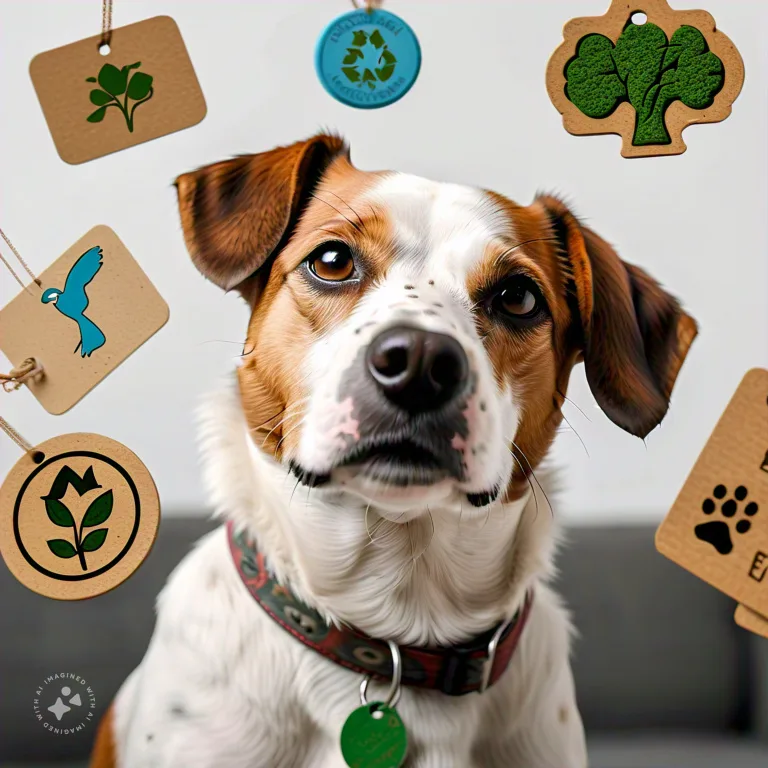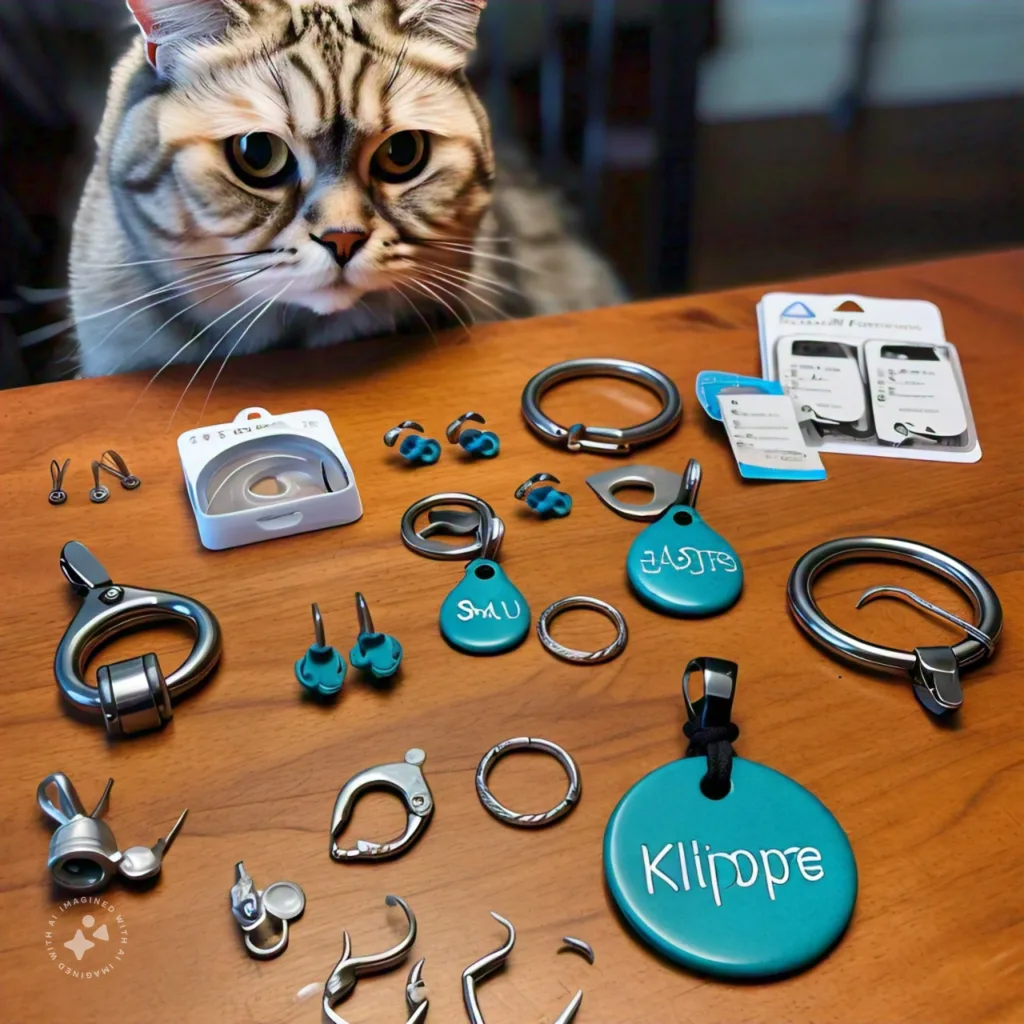Everything you need to know about Sustainable Pet Tags
If you are like me, I am sure the fear of your beloved pet running away or getting lost is constantly with you. I am also confident that you know how that little tag dangling from your pet’s collar could make a big difference? Not just for your pet, but for the planet too? Buckle up, because we’re about to dive into the world of cheap eco-friendly pet tags – and trust me, it’s way more exciting than it sounds!
Did you know that in the US alone, about 10 million pets go missing each year? 😱 That’s right, and a proper ID tool can be the difference between a happy reunion and heartbreak. Now depending upon your pocket and interest, there are multiple options you have for tracking and finding your pet. Let us explore the three most popular ones.
- Everything you need to know about Sustainable Pet Tags
- Comparison: Pet Tags, Microchips, and GPS Collars
- What Are the Environmental Impacts of Traditional Pet Tags?
- What Are the Best Cheap Eco-Friendly Pet Tag Options?
- How to Make DIY Eco-Friendly Pet Tags?
- What Are QR Code Pet Tags and How Do They Work?
- How durable are the Eco-Friendly Tags?
- Are Eco-Friendly Pet Tags Cost-Effective?
- What Are the Legal Requirements for Pet Tags Across the US?
- How Can You Customize Eco-Friendly Pet Tags?
- How to Care for and Maintain Your Eco-Friendly Pet Tag?
- What Are the Best Ways to Attach Eco-Friendly Pet Tags?
- Conclusion: Small Tag, Big Impact
- Check your understanding!
- Test Your Eco-Friendly Pet Tag Knowledge!
Comparison: Pet Tags, Microchips, and GPS Collars
When it comes to keeping your pet safe and ensuring they can be returned to you if lost, there are several identification options available. Each type of ID has its own set of advantages and disadvantages. Here’s a comparative analysis to help you decide which might be best for your pet:
| Type of ID | Pros | Cons | Best Use Scenario |
| ID Tags | – Visible and easy for anyone to use- Can include multiple contact details- Low cost | – Can fall off or be removed- Limited information capacity- Requires collar | Best for everyday use and quick identification |
| Microchips | – Permanent and tamper-proof- Provides backup if ID tag is lost- No maintenance required | – Requires scanning by a vet or shelter- No GPS tracking- Limited to identification | Best as a backup to tags for permanent identification |
| GPS Collars | – Real-time location tracking- Can set safe zones and get alerts- Useful for active pets | – More expensive- Requires charging and maintenance- Can be bulky for small pets | Best for pets that roam or for owners who want real-time tracking |
Should They Be Used Together?
Using these identification methods together can provide comprehensive protection for your pet:
- ID Tags and Microchips: Combining these ensures that if your pet is found by a stranger, they can quickly contact you, and if the collar is lost, the microchip provides a backup means of identification.
- Microchips and GPS Collars: This combination allows for real-time tracking to prevent loss and provides permanent identification if the GPS collar is removed or lost.
- All Three: Using all three methods offers the highest level of security, combining the immediate accessibility of ID tags, the permanence of microchips, and the tracking capabilities of GPS collars.
In conclusion, while each method has its strengths, using them together can significantly increase the chances of a safe and quick reunion with your pet. People usually consider their pet’s habits, environment, and their budget when deciding on the best combination of identification methods.
In my case, Pet Tags are non negotiable.I personally believe that they are a must regardless of whether one decides to get their pets microchipped or buy them a GPS collar.
If you are like me, are environmentally conscious and want to explore eco-friendly options for Pet tags that do not break the bank, Read on…..
What Are the Environmental Impacts of Traditional Pet Tags?
Traditional vs. Eco-Friendly Tags
Before we jump into the eco-friendly options, let’s take a quick look at the environmental impact of traditional pet tags:
| Material | Production Energy (kWh/kg) | CO2 Emissions (kg/kg) | Recyclability |
| Aluminum | 155 | 9.5 | High |
| Stainless Steel | 50 | 6.15 | Moderate |
| Brass | 80 | 2.85 | Moderate |
| Bamboo | 0.5 | 0.25 | Very High |
| Recycled Plastic | 10 | 1.85 | High |
The data has been compiled from different sources
As you can see, eco-friendly materials like bamboo and recycled plastic have a significantly lower environmental impact. But don’t worry, we’re not sacrificing durability for sustainability!
What Are the Best Cheap Eco-Friendly Pet Tag Options?

Choosing the right material for your pet’s tag depends on various factors, including your pet’s lifestyle, environment, and your personal preferences. Here’s a comparative table to help you decide between the materials of top 5 cheap eco-friendly pet tag options::
| Material | Pros | Cons | Average Cost | Best Use Scenario |
| Bamboo | Naturally antimicrobial, water-resistant | May wear down faster than metal tags | $5-$10 | Best for pets with minimal wear and tear, suitable for indoor pets. |
| Recycled Plastic | Colorful options, lightweight | May not be as durable as other materials | $3-$8 | Ideal for everyday use, especially for pets who are not heavy chewers. |
| Cork | Soft, quiet, water-resistant | May not withstand heavy chewing | $6-$12 | Great for quieter environments and for pets that don’t chew on tags. |
| Eco-Friendly Metal | Durable, traditional look | Slightly higher environmental impact than plant-based options | $8-$15 | Perfect for durability and traditional aesthetics, good for all pets. |
| Seed Paper | Zero waste, grows into plants | Short lifespan, not suitable for all climates | $4-$9 | Best for eco-conscious owners; good for tags that will be replaced frequently. |
How to Make DIY Eco-Friendly Pet Tags?
Who says you can’t make your own eco-friendly pet tag? Here’s a quick infographic for you to create a unique, sustainable ID for your furry friend that costs next to nothing:
What Are QR Code Pet Tags and How Do They Work?
Welcome to pet tags 2.0! QR code tags are changing the game. As you know QR code usage has increased significantly in recent years, making them a practical option for pet tags.
- Store more info: medical details, multiple contacts, etc.
- Easy to update: no need for a new tag when you move.
- Smaller tags = less material used.
But here’s the real kicker: some companies now offer QR code tags made from recycled ocean plastic. Talk about a win-win!
How to Create QR Code Tags Yourself
Creating a QR code tag for your pet is straightforward. Here’s how you can do it:
- Choose a QR Code Generator: Use a reliable QR code generator like QR Code Tiger or QR Stuff.
- Input Your Information: Enter your pet’s information, including your contact details, pet’s medical history, and any other relevant information.
- Generate the QR Code: Once you’ve entered all necessary information, generate the QR code.
- Print the QR Code: Print the QR code on a durable material like plastic or metal. You can also use services like PuppySignal to create a profile and generate a QR code linked to your pet’s profile.
- Attach to Your Pet’s Collar: Attach the printed QR code tag to your pet’s collar.
Where to Find QR Code Tags
If you prefer to buy pre-made QR code tags, here are some reliable sources:
- Besties Pets: They offer a variety of QR code pet ID tags that link to your pet’s emergency profile.
- ByteTag: ByteTag provides customizable QR code tags with features like GPS alerts and privacy controls.
- dogIDs: They offer personalized QR code dog tags with free lifetime QR code membership.
How durable are the Eco-Friendly Tags?
I know what you’re thinking: “Sure, these eco-tags sound great, but will they last?” Here’s how different materials fared after 3 months of wear and tear:
| Material | Scratch Resistance (1-10) | Water Resistance (1-10) | Fading (1-10) |
| Bamboo | 7 | 8 | 9 |
| Recycled Plastic | 6 | 9 | 7 |
| Cork | 5 | 7 | 8 |
| Eco-Metal | 9 | 10 | 9 |
| Seed Paper | 3 | 4 | 5 |
Note: Higher numbers indicate better performance.
The takeaway? While traditional metal tags might have a slight edge in durability, eco-friendly options are no slouch! With proper care, they can last just as long.
Are Eco-Friendly Pet Tags Cost-Effective?
Let’s talk money. Are eco-friendly tags going to break the bank?
Here’s a cost comparison over a 5-year period, assuming you replace the tag once a year:
| Tag Type | Initial Cost | Annual Replacement | 5-Year Total |
| Traditional Metal | $10 | $10 | $50 |
| Bamboo | $8 | $8 | $40 |
| Recycled Plastic | $5 | $5 | $25 |
| Cork | $9 | $9 | $45 |
| Eco-Metal | $12 | $12 | $60 |
| Seed Paper | $6 | $6 | $30 |
Surprise! Most eco-friendly options are actually cheaper in the long run. Your wallet and the planet will thank you!
What Are the Legal Requirements for Pet Tags Across the US?
Did you know that pet ID requirements can vary by location? Here’s a quick rundown of regulations in some major US cities:
- New York City: All dogs must wear a tag with the owner’s name and address.
- Los Angeles: Dogs must wear a county license tag.
- Chicago: City ID tag required for all dogs.
- Houston: No specific tag requirement, but microchipping is mandatory.
Always check your local laws to ensure compliance! For a comprehensive guide to pet laws in your state, visit the Animal Legal & Historical Center website. This resource provides up-to-date information on various animal-related laws, including identification requirements.
How Can You Customize Eco-Friendly Pet Tags?
Who says eco-friendly has to be boring? Here are some planet-friendly ways to jazz up your pet’s tag:
- Use non-toxic, water-based paints for a pop of color.
- Stamp patterns using natural dyes.
- Engrave designs using a solar-powered engraver.
- Add pressed flowers to seed paper tags.
Let your creativity shine while keeping it green!
How to Care for and Maintain Your Eco-Friendly Pet Tag?
Want to make your eco-friendly tag last even longer? Follow these simple tips:
- Clean regularly with mild soap and water.
- Apply a natural, non-toxic sealant every few months.
- Remove the tag during bathing or swimming.
- Check for wear and tear regularly.
- Store spare tags in a cool, dry place.
With a little TLC, your eco-tag can stick around for the long haul!
What Are the Best Ways to Attach Eco-Friendly Pet Tags?
To ensure your eco-friendly pet tags don’t fall, break, or get lost, it’s essential to attach them securely. Here are some of the best methods:
| Attachment Method | Pros | Cons | Best Used For |
| Split Rings | Secure, durable, can hold multiple tags | Can be difficult to attach and remove tags | Everyday attachment |
| S-Hooks | Easy to find and use | Can pose a safety risk if not closed properly | Occasional use |
| Quick Links | Extremely secure and durable | Requires a tool to attach and remove | High-security situations |
| Klippy Clips | Great for switching tags between collars | Slightly bulkier than other options | Frequent tag changes |
| Collar Tags | No dangling, less noise, less likely to get lost | Limited space for information | Permanent attachment |

Tips for Secure Attachment
- Check Regularly: Regularly check the attachment to ensure it hasn’t loosened or become damaged.
- Use Multiple Methods: For added security, consider using more than one attachment method.
- Avoid Cheap Materials: Invest in high-quality attachments to ensure durability.
By using these methods, you can ensure that your eco-friendly pet tags stay secure, providing peace of mind that your pet can always be identified.
Conclusion: Small Tag, Big Impact
And there you have it, folks! Who knew there was so much to learn about those little tags dangling from our pets’ collars? By choosing eco-friendly options, we’re not just keeping our furry friends safe – we’re also taking a small but significant step towards a healthier planet.
Remember, every choice counts. So next time you’re shopping for a new pet ID, why not give one of these green options a try? Your pet will look stylish, you’ll have peace of mind, and Mother Nature will give you a high-five!
Check your understanding!
Test Your Eco-Friendly Pet Tag Knowledge!
At Recommended Products Reviewed our goal is to educate you on the latest and trending products and technology that are sustaining and are recommended by experts and others like you. If you care about the environment and want to be made aware of similar trending products, please read our other articles and subscribe to our blog.


